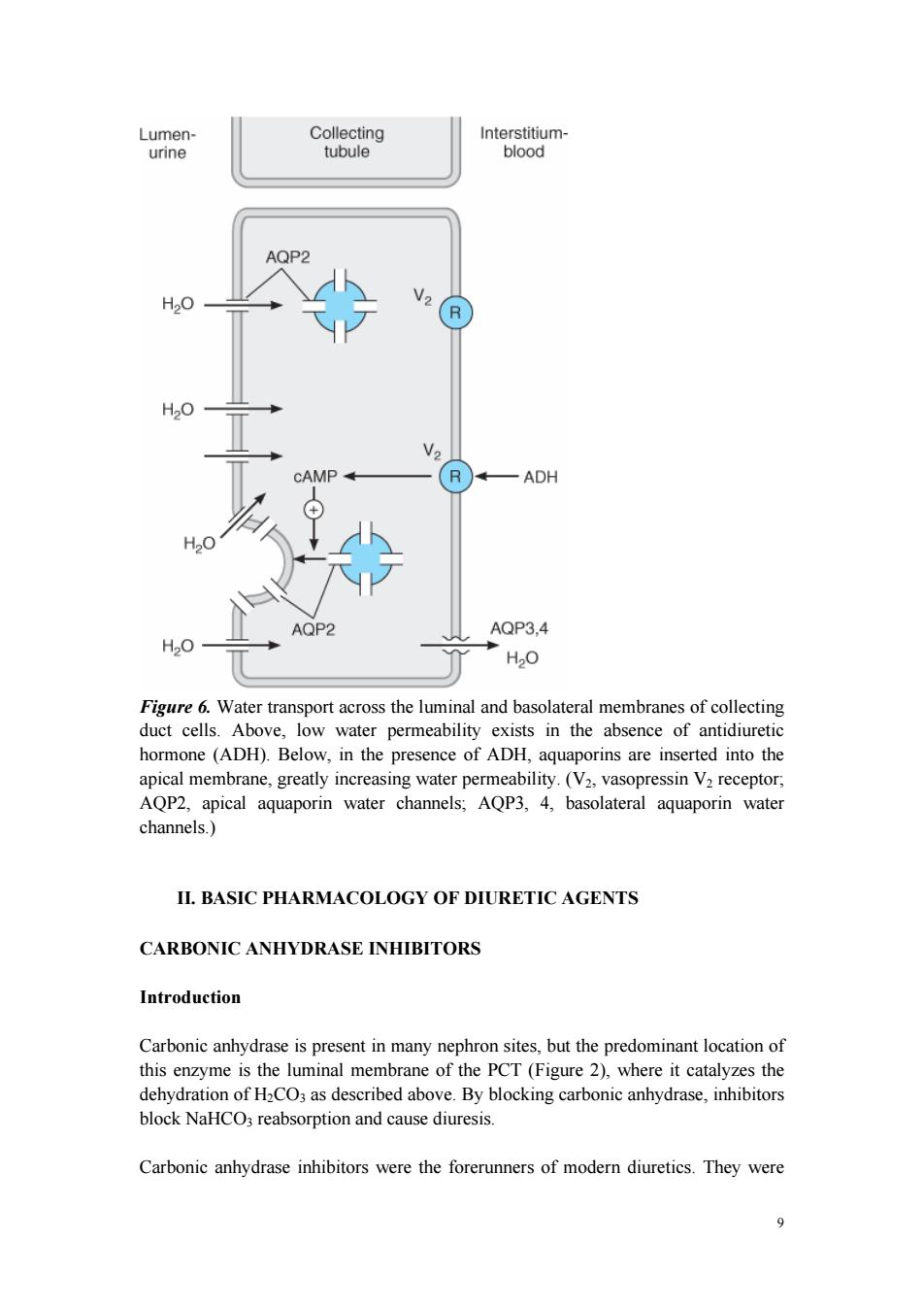正在加载图片...

Lumen- Collecting Interstitium- urine tubule blood AQP2 H2O CAMP R —ADH H20 AQP2 AQP3,4 H20 H20 Figure 6.Water transport across the luminal and basolateral membranes of collecting duct cells.Above,low water permeability exists in the absence of antidiuretic hormone(ADH).Below,in the presence of ADH,aquaporins are inserted into the apical membrane,greatly increasing water permeability.(V2,vasopressin V2 receptor, AQP2,apical aquaporin water channels;AQP3,4,basolateral aquaporin water channels.) II.BASIC PHARMACOLOGY OF DIURETIC AGENTS CARBONIC ANHYDRASE INHIBITORS Introduction Carbonic anhydrase is present in many nephron sites,but the predominant location of this enzyme is the luminal membrane of the PCT(Figure 2),where it catalyzes the dehydration of H2CO3 as described above.By blocking carbonic anhydrase,inhibitors block NaHCO3 reabsorption and cause diuresis. Carbonic anhydrase inhibitors were the forerunners of modern diuretics.They were 99 Figure 6. Water transport across the luminal and basolateral membranes of collecting duct cells. Above, low water permeability exists in the absence of antidiuretic hormone (ADH). Below, in the presence of ADH, aquaporins are inserted into the apical membrane, greatly increasing water permeability. (V2, vasopressin V2 receptor; AQP2, apical aquaporin water channels; AQP3, 4, basolateral aquaporin water channels.) II. BASIC PHARMACOLOGY OF DIURETIC AGENTS CARBONIC ANHYDRASE INHIBITORS Introduction Carbonic anhydrase is present in many nephron sites, but the predominant location of this enzyme is the luminal membrane of the PCT (Figure 2), where it catalyzes the dehydration of H2CO3 as described above. By blocking carbonic anhydrase, inhibitors block NaHCO3 reabsorption and cause diuresis. Carbonic anhydrase inhibitors were the forerunners of modern diuretics. They were